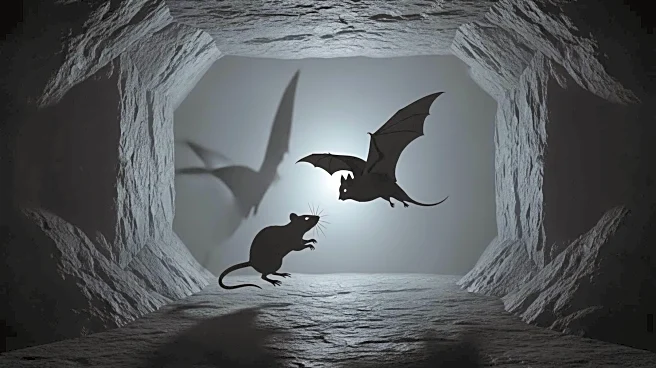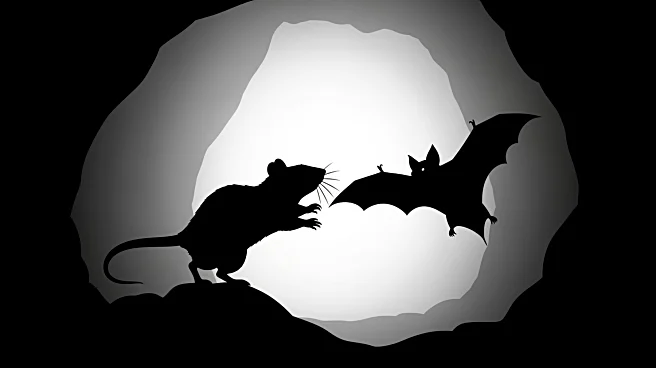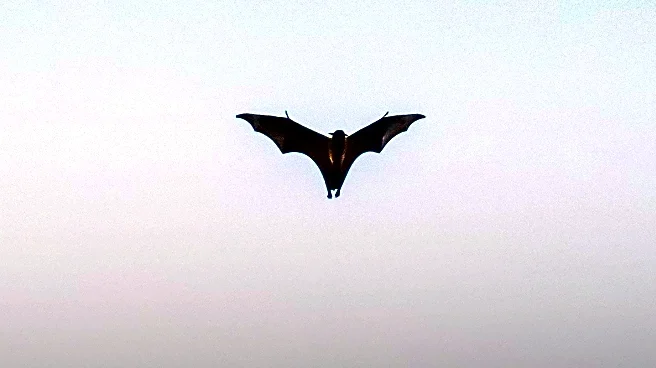What's Happening?
A recent study has revealed that rats are attacking bats in urban settings, potentially creating a new route for virus transmission to humans. Researchers, while filming bats to study their communication,
observed rats grabbing and biting bats in a cave in northern Germany. This behavior was noted to be more common in areas with higher rat populations, which are often found in cities. The study highlights the risk of rats acting as a bridging host for bat viruses, including variants of the coronavirus, to spread to humans. The presence of rats near bat hibernation spots poses additional threats to bat populations, which are already under pressure due to habitat destruction and pollution.
Why It's Important?
The discovery of rats attacking bats is significant as it suggests a potential new pathway for virus transmission from bats to humans. Rats, being common in human environments, could serve as a bridging host for bat viruses, increasing the risk of future pandemics. This situation underscores the need for better management of urban wildlife to prevent the spread of diseases. Additionally, declining bat populations could have adverse effects on ecosystems, as bats play crucial roles in insect control, seed dispersal, and pollination. Protecting bat habitats is essential to maintain these ecological services.
What's Next?
Researchers are collaborating with environmental agencies to develop strategies to reduce rat populations around bat hibernation sites. These efforts aim to protect bats from invasive species and preserve their habitats. The study calls for conservation actions to mitigate the impact of urbanization on wildlife and prevent potential health risks associated with virus transmission. Further research is needed to understand the full implications of rat-bat interactions and to develop effective measures to safeguard both human health and biodiversity.
Beyond the Headlines
The study highlights the broader issue of human-induced environmental changes affecting wildlife. Urbanization not only disrupts natural habitats but also introduces new threats to species like bats. The presence of rats in bat habitats is a symptom of larger ecological imbalances caused by human activities. Addressing these challenges requires a holistic approach to urban planning and wildlife conservation, ensuring that development does not come at the expense of biodiversity.












